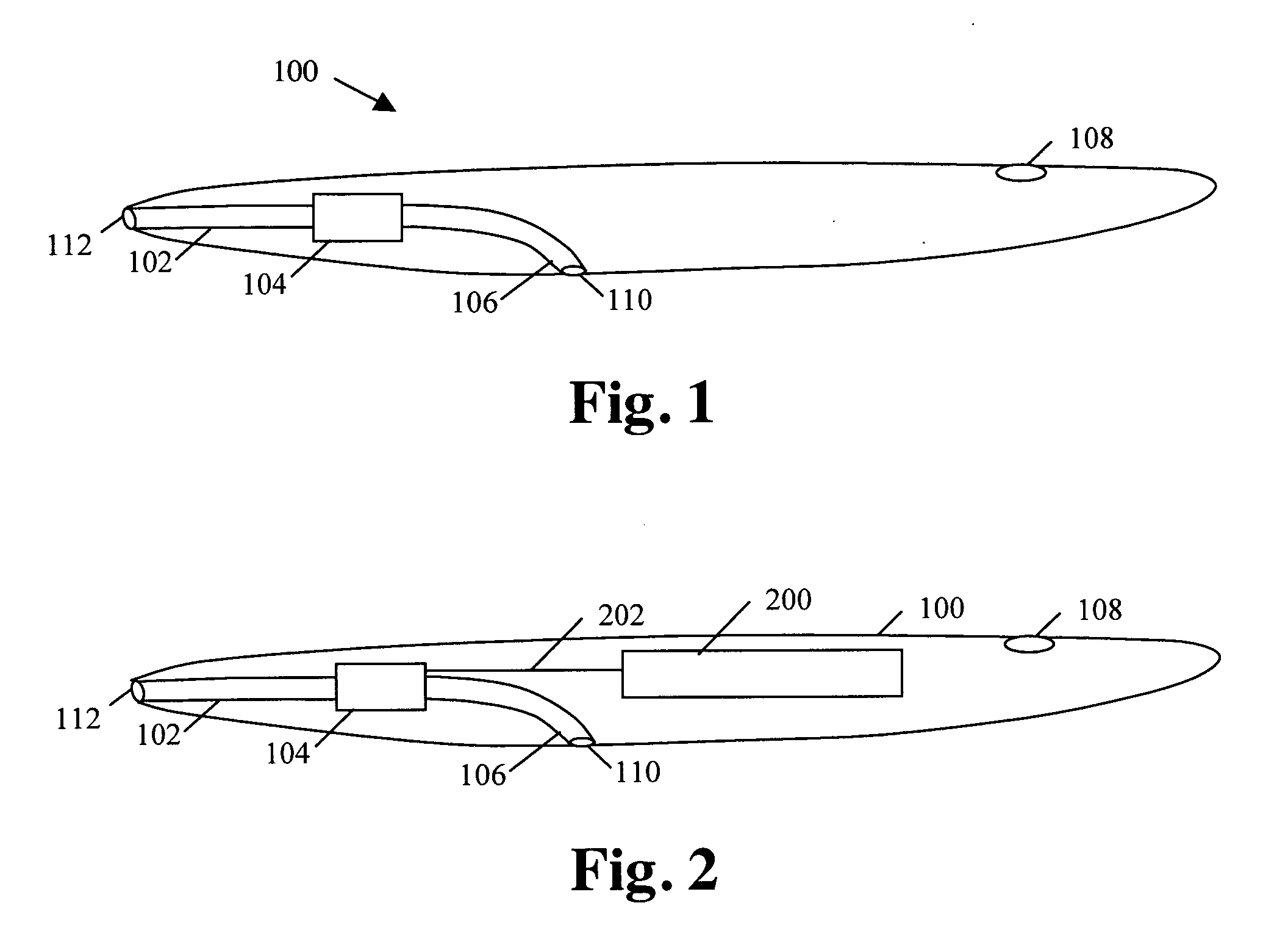Clean energy powered surfboards
a technology of clean energy and surfboards, applied in the field of surfboards, can solve the problems of reducing the performance of surfers, reducing the efficiency of surfing, and reducing the risk of injury to surfers, and achieves the effects of low cost, easy learning, and convenient us
- Summary
- Abstract
- Description
- Claims
- Application Information
AI Technical Summary
Benefits of technology
Problems solved by technology
Method used
Image
Examples
Embodiment Construction
[0072]The present invention provides an improved powered surfboard having various advantages that make for easy to learn, easy to use, safe, exciting, high performance, environmentally friendly surfing on any ocean wave in the world. The various embodiments include novel motor, turbine, or electric motor generator surfboards comprising hydrogen or electric-powered motors, which can be switch-activated and which drive jet pumps. Energy can be stored as compressed gas, including air and hydrogen. Energy can be stored in novel capacitors that are incorporated in the body of the surfboard. Energy can be generated by solar or water power while surfing.
Powered Surfboard
[0073]FIG. 1 illustrates a general block diagram of a clean energy powered surfboard 100 comprising a motor 104 attached to an intake tube 106 and an output tube 102. An intake port 110 is positioned on the side or bottom of the surfboard 100 and attaches to the intake tube 106. At least one output jet 112 is located at the...
PUM
| Property | Measurement | Unit |
|---|---|---|
| time | aaaaa | aaaaa |
| weights | aaaaa | aaaaa |
| weights | aaaaa | aaaaa |
Abstract
Description
Claims
Application Information
 Login to View More
Login to View More - R&D
- Intellectual Property
- Life Sciences
- Materials
- Tech Scout
- Unparalleled Data Quality
- Higher Quality Content
- 60% Fewer Hallucinations
Browse by: Latest US Patents, China's latest patents, Technical Efficacy Thesaurus, Application Domain, Technology Topic, Popular Technical Reports.
© 2025 PatSnap. All rights reserved.Legal|Privacy policy|Modern Slavery Act Transparency Statement|Sitemap|About US| Contact US: help@patsnap.com



